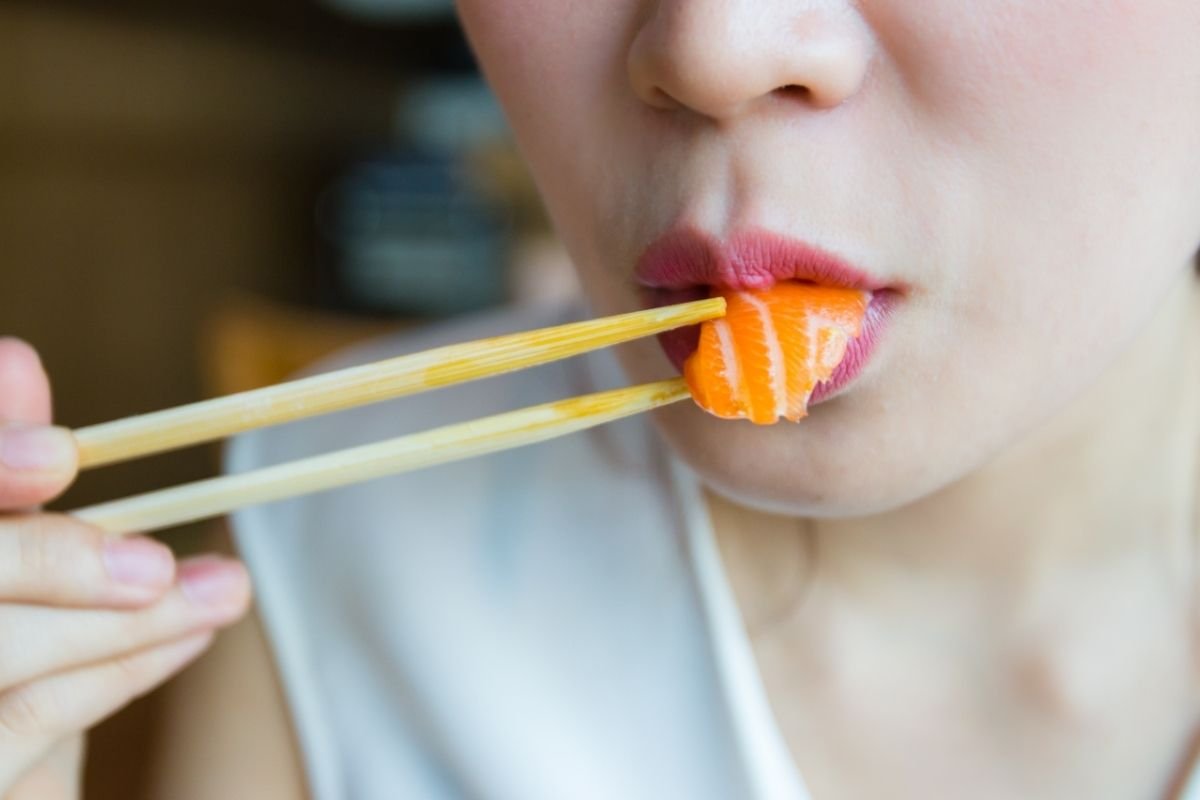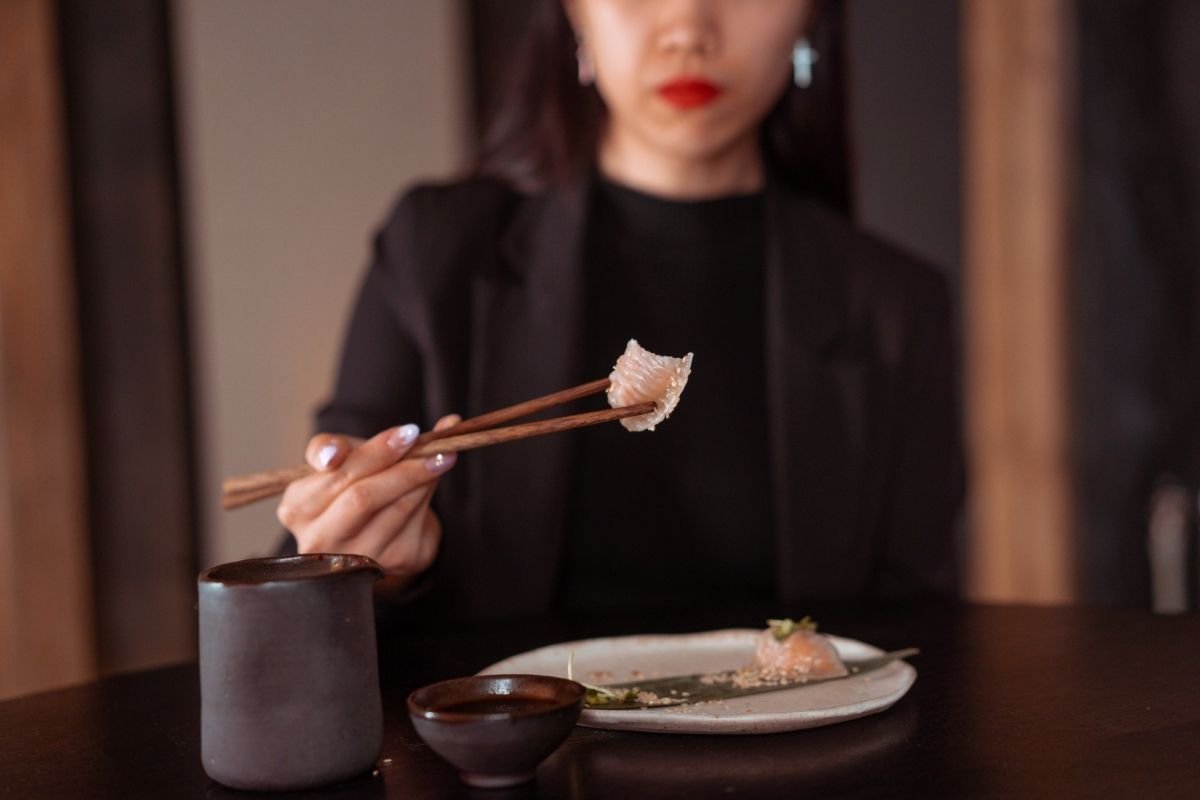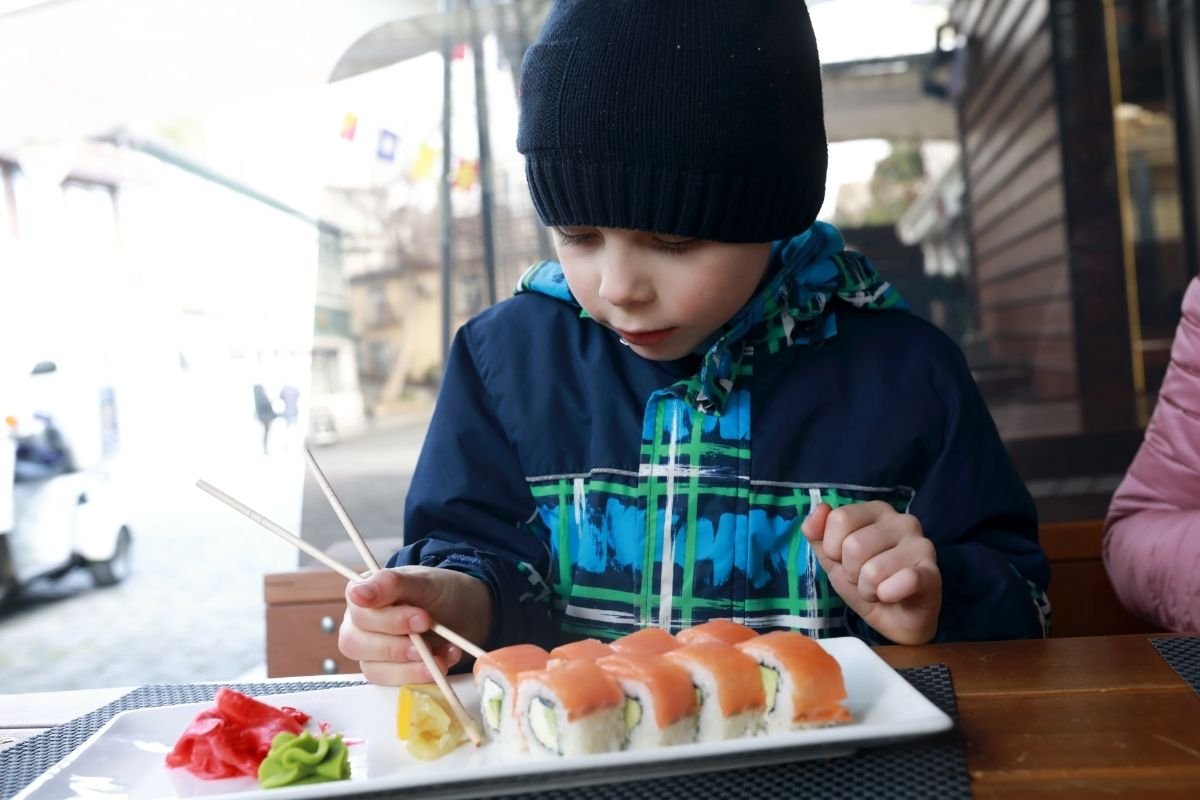Other than being polite, Japanese dining rules aren’t necessary, but following them can enhance your dining experience. Lots of people will be unaware of sushi traditions, so you shouldn’t be looked down upon for not knowing everything.

One of these customs is whether sushi is eaten with the hands or chopsticks. It’s a common custom people wonder about, and one that little people seem to know the answer to!
Now the answer itself isn’t obvious at first, but don’t worry. We’ll cover the answer in this article. You’ll also find information on sushi etiquette so you can be prepared the next time you eat at a sushi restaurant (see also ‘Can Sushi Be Cooked?‘).
Can You Use Your Hands To Eat Sushi?
We’ll get into the main question first. Yes, you can eat sushi with your hands, but it depends on the type of sushi you go for. Sushi rolls and nigiri, pieces of rice with protein on the top, should both be eaten with your hands.
Chopsticks are meant to be used for sashimi, little slices of fish (see also, ‘What is Ikura?‘) without rice.
You may think that chopsticks are cleaner than using your hands, but lots of Japanese restaurants will give you a hot towel to clean your hands before you eat. If they don’t, wash your hands in the restroom after you order.
Sushi Etiquette: Rules On Eating Sushi
Now we’ll cover general etiquette rules you should follow at a sushi restaurant.
Arriving At The Restaurant
As you enter the restaurant, the host or hostess will greet you before you sit down. They may ask you to come in with the Japanese phrase, “irasshaimase”.
You don’t need to say anything back, but it’s always polite to accept their greeting. Just like any other restaurant, you should answer questions about your planned evening, like how many people will be dining, or where you’d like to sit.
Seating at the sushi bar will allow you to converse with the sushi chef (itamae) and see how your food is being prepared. You can always ask to sit at the sushi bar, but if you’d prefer otherwise, a table should suffice.
Placing Your Sushi Order
If you’re sitting at the sushi bar, never ask the itamae for anything but sushi. Drinks, soup, and food that isn’t sushi should be managed by the wait staff.
You can ask the itamae for their recommendation, but never ask if something is fresh or not. This suggests that something isn’t edible, but sushi can only be served with the freshest fish, so this can be a very insulting comment.
If you’re interested in their recommendation, a well-versed itamae may give you suggestions on what you should try. This will either be the food that they prefer or the food that they’re best skilled in making.
You can talk to the itamae but do so respectfully, as they’ll be very busy making and serving food. That being said, if he is free and can manage light conversation, you may interact with him.
This may help create a connection with the itamae, especially if the restaurant becomes one of your regular places.
Before you order, keep in mind that it’s impolite to order more than you can eat. Leaving food on your plate is considered rude, so make note of your hunger level.
You should also be aware of your tastebuds, as acting like a certain food is disgusting is also a big no-no.
Eating Sushi

There are several things to keep in mind when you eat sushi.
If you are given a hot towel at the start of your meal, use it to clean your hands. Once you’re done, try to fold it neatly instead of scrunching it up.
Never rub your chopsticks against each other. If they’re not being used, place them on the holder or the shoyu (sauce dish).
Never put wasabi into the shoyu. The itamae will have already placed a certain amount of wasabi in the food. This amount will be what they believe is the proper ratio of wasabi to fish. If you like more wasabi (see also ‘How To Grow Wasabi‘), you can add some more onto the fish as you eat it.
We’ve covered why sushi and nigiri are eaten with the hands. When you dip nigiri into the soy sauce, turn it around so that fish enters the sauce.
Rice will soak up the soy sauce too much and change how your food tastes. Rice grains may also drop into the shoyu dish and ruin the soy sauce for later.
Nigiri sushi is meant to be eaten whole. Sometimes this isn’t possible in Western places, as they make rather large pieces. Traditional Japanese sushi will be bite-size to make it easier to fit in the mouth.
If you’re dining at a restaurant where the pieces are large, try your best to eat it in one bite, but if it’s impossible, relax. Sushi etiquette doesn’t demand that you defy physics while you dine!
Ginger, or gari, is meant to cleanse the palate. You eat a piece of ginger between different courses, bites, or types of sushi. Don’t eat these alongside your food.
If you’re picking up food from someone else’s plate, use chopsticks, but don’t use the end that you put in your mouth. Using the end that you hold is polite and hygienic.
The End Of The Meal
In Japan, tips will be included in the bill, but if you’re dining in America, remember to tip. If you’re sitting at the sushi bar, don’t hand the itamae money. This is unhygienic as they’ll be handling food. There should be a tip jar for this purpose.
Remember to tip the wait staff as well.
Always thank the itamae for the food if you were sitting at the bar. A simple thank you would suffice, but you can try some Japanese phrases. “Domo arigato”, is a polite way of saying thank you.
“Oishikatta desu” means that the food was delicious, but this phrase isn’t used a lot.
Conclusion
The list above isn’t an exhaustive list of Japanese dining etiquette, but it should help you feel more prepared when you next eat sushi. Remember to use chopsticks for pieces of sashimi (see also, ‘How to Use Chopsticks for Ramen‘), but your hands for sushi rolls and nigiri.
Keep these rules in mind, but don’t feel scared of doing something wrong! Enjoy the cuisine, but remember to be polite, just like you would be at any other restaurant.
- What Is a Maiko? - July 13, 2025
- What Does Domo Arigato Mean? - July 12, 2025
- What Does Naruto Mean? - July 12, 2025









